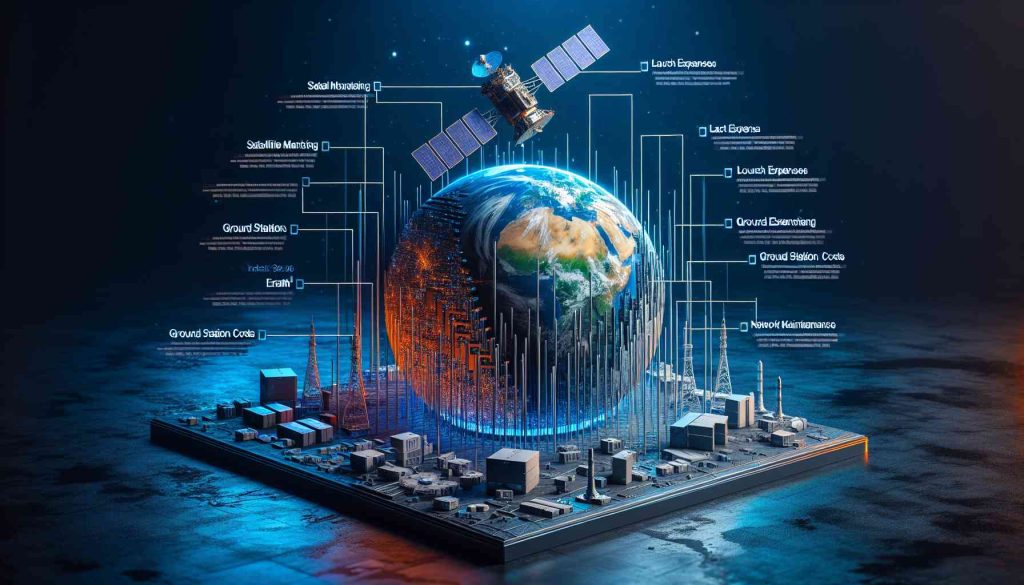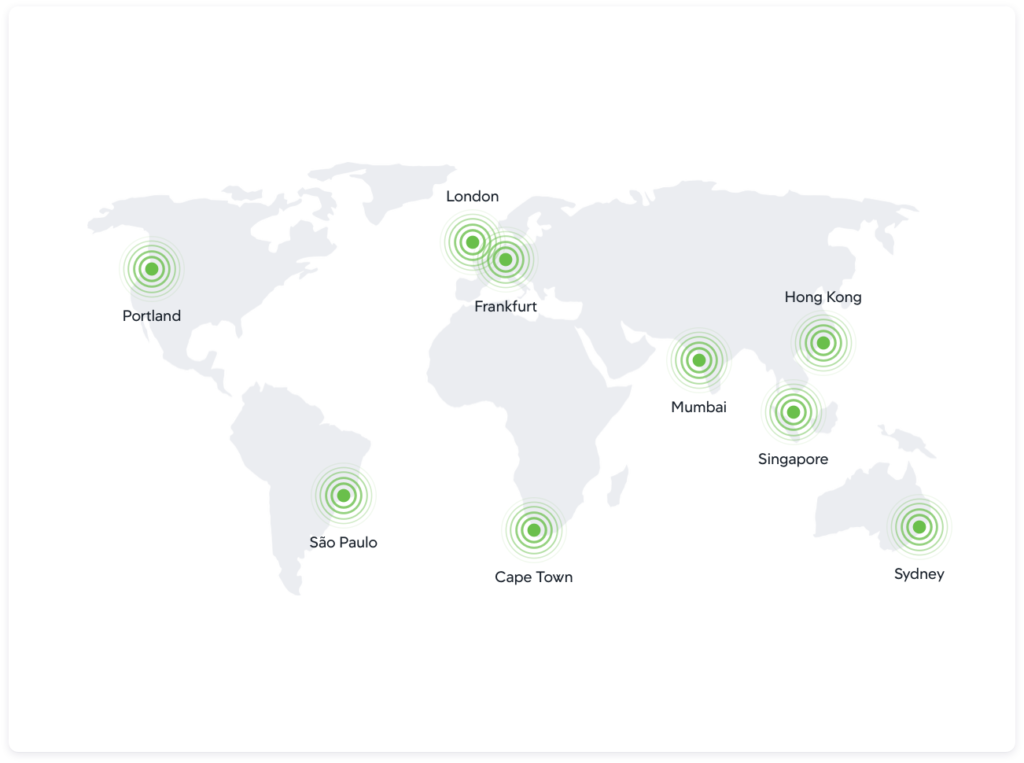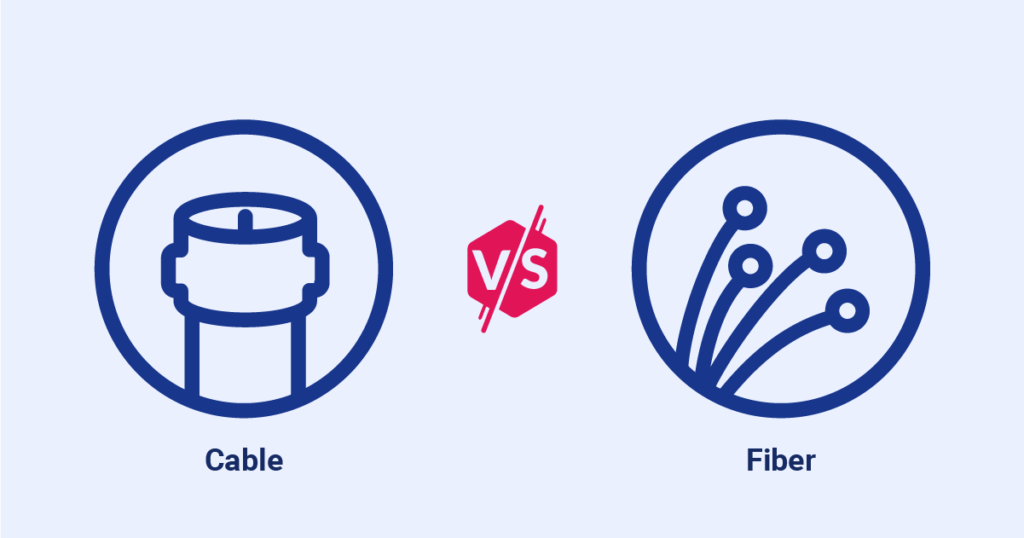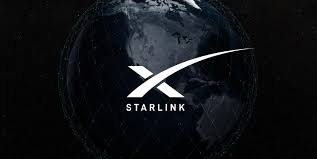What is Starlink?
“Curious about a groundbreaking internet solution Enter Starlink. This revolutionary satellite service promises to transform home internet access. Let’s dive into what Starlink offers and why it’s sparking widespread interest.”
Connecting Homes with Starlink
Starlink, developed by SpaceX, redefines internet connectivity by utilizing a constellation of satellites orbiting the Earth. To bring this technology into homes, a user needs a Starlink Kit comprising a satellite dish, a mounting tripod, and a router.
Satellite Dish Installation
The installation process involves setting up the satellite dish in an open area with a clear view of the sky. The dish automatically adjusts its position to establish a connection with the satellites, ensuring a reliable internet link.
Router Configuration
Once the dish is installed, connecting the router to the dish establishes the internal network. Users can connect their devices, such as computers or smart devices, to the router for internet access.
User Interface and Setup
The user interface simplifies the setup process, guiding individuals through the necessary steps to activate and configure the service. This interface allows users to manage their network settings and monitor their connection status.
Accessibility and Scalability
Starlink aims for global accessibility, expanding its coverage to areas with limited traditional internet infrastructure. As the satellite network grows, it promises to bridge the connectivity gap in remote regions, offering scalable access to high-speed internet.
Reliability and Performance
The satellite technology optimizes connectivity, ensuring a stable and consistent internet connection, even in remote or underserved areas. This reliability and performance make Starlink an appealing option for those seeking robust internet access.
Customer Support and Maintenance
Starlink provides customer support to assist with installation, troubleshooting, and maintenance. This service ensures users receive the necessary assistance for a seamless experience with their satellite internet setup.
Future Enhancements
Continual improvements and upgrades in satellite technology are expected, promising enhancements in speed, reliability, and coverage. This ongoing development ensures a future-proofed solution for users.
Starlink’s innovative approach to connecting homes via satellite internet presents a promising alternative, particularly in areas where traditional internet infrastructure is lacking or inadequate.
Speed Expectations with Starlink

Starlink boasts impressive internet speeds, but various factors influence the actual speed experienced by users.
Advertised Speeds
Starlink advertises speeds ranging from 50 Mbps to 150 Mbps, with latency varying from 20ms to 40ms. These figures represent an improvement over traditional satellite internet services, offering competitive speeds.
Factors Affecting Speed
Satellite Constellation Density
The number of satellites and their distribution impact signal strength and, consequently, internet speeds.
Network Congestion
During peak usage times, congestion might affect speeds as more users share the available bandwidth.
Weather Conditions
Adverse weather, such as heavy rain or snow, might temporarily disrupt the satellite signal, affecting speed and connectivity.
Real-World Performance
Initial user reports indicate varying speeds based on location and network load. Some users experience speeds surpassing 150 Mbps, while others observe fluctuations during peak times or adverse weather.
Latency and Gaming
Starlink’s low latency makes it appealing for online gaming, reducing delays in data transmission. This lower latency compared to traditional satellite services offers a smoother gaming experience.
Rural Connectivity Impact
In remote or rural areas lacking high-speed internet options, Starlink provides a significant performance boost, surpassing other available alternatives.
Expectations for Improvement
As the satellite constellation expands and technology advances, expectations for improved speeds and reduced latency remain high. Continuous updates and enhancements promise a more consistent and faster service over time.
Starlink’s promising speeds present a compelling option for users seeking reliable and high-speed internet, especially in areas with limited connectivity options. Understanding the factors influencing speed helps users set realistic expectations while harnessing the benefits of this innovative satellite service.
Cost Analysis of Starlink

Understanding the pricing structure and associated costs is essential for potential users considering Starlink’s satellite internet service.
Initial Equipment Cost
Starlink Kit
The initial cost includes purchasing the Starlink Kit, which comprises the satellite dish, mounting equipment, router, and associated hardware. This kit is a one-time expense necessary for accessing the service.
Subscription Plans
Monthly Service Fee
Starlink offers subscription plans with monthly service fees. These fees vary based on geographic location and service availability.
Potential Data Usage Fees
Some plans might have data usage caps, potentially incurring additional charges for exceeding allocated data limits.
Deposit or Prepayment
Beta Testing Phase
During the beta testing phase, users were required to pay an upfront fee, serving as a deposit for the equipment and service. This fee might differ from the finalized subscription pricing.
Additional Costs
Taxes and Fees
Additional charges such as taxes, regulatory fees, or surcharges might apply, impacting the overall cost.
Shipping or Installation Fees
Depending on the location and service availability, additional fees for shipping or professional installation might be applicable.
Cost vs. Traditional Internet
Comparative Analysis
When comparing Starlink’s cost to traditional internet services, users must consider not just the monthly fee but also the value gained from accessing high-speed internet in remote or underserved areas.
Pricing Flexibility and Updates
Potential Price Adjustments
As the service progresses from its beta phase to wider availability, pricing structures may undergo revisions or modifications.
Expectations for Competitive Pricing
Increased competition and technological advancements could potentially drive more competitive pricing in the satellite internet market.
Return on Investment (ROI)
Value Proposition
Assessing the cost of Starlink against the value it provides in terms of improved connectivity, reliability, and high-speed internet access in underserved areas helps in determining the return on investment.
Understanding the various cost components associated with Starlink’s satellite internet service allows users to make informed decisions based on their budget, internet usage requirements, and the perceived value of the offered service.
Availability and Service Locations

The accessibility and reach of Starlink’s satellite internet service play a crucial role in its adoption and usage, particularly in areas lacking reliable internet infrastructure.
Current Service Availability
Beta Phase Coverage
Initially, Starlink offered its service to limited regions during its beta phase, primarily focusing on higher latitudes.
Expansion Efforts
Over time, the service expanded to encompass a broader range of latitudes and geographical locations.
Global Expansion Plans
Global Coverage Goals
SpaceX aims to provide global coverage, encompassing remote and underserved regions worldwide.
Focus on Rural Areas
Starlink’s focus on rural and remote areas lacking traditional internet access makes it a promising solution for these communities.
Regulatory Approvals and Service Rollout
Regulatory Challenges
Compliance with different countries’ regulatory requirements impacts the pace and extent of service rollout in various regions.
Local Permissions and Clearances
Obtaining necessary permissions and clearances from local authorities is pivotal for offering services in specific areas.
Service Availability Updates
Continual Expansion
Starlink’s ongoing efforts to deploy more satellites contribute to expanding coverage and service availability.
Customer Pre-orders
Interested users can pre-order the service, indicating their interest and potentially securing access once the service becomes available in their area.
Rural Connectivity Impact
Bridging the Connectivity Gap
Starlink’s ability to provide high-speed internet in remote or rural areas lacking reliable connectivity is a key driver in its expansion.
Educational and Economic Benefits
Access to robust Internet services can significantly impact education, business, and various industries in underserved regions.
Future Expansion Prospects
Projected Timeline
Anticipated timelines for service expansion and availability in different regions based on SpaceX’s deployment plans and regulatory approvals.
Community Impact
The potential transformative effect of Starlink’s global coverage on various communities and industries worldwide.
Understanding Starlink’s current service coverage, expansion strategies, and its impact on underserved areas provides insights into the potential for improved connectivity and internet access across diverse geographic locations.
Comparison with Other Internet Services

Comparing Starlink’s satellite service with other existing internet options provides valuable insights into its advantages and limitations, especially concerning speed and reliability.
Satellite vs. Fiber Optic
Speed and Latency
Fiber optic internet generally offers faster speeds and lower latency compared to satellite services like Starlink.
Accessibility
While fiber is limited to populated areas, Starlink extends coverage to remote and underserved regions lacking fiber infrastructure.
Satellite vs. DSL and Cable
Speed and Consistency
Satellite internet, including Starlink, often surpasses DSL in speed but might exhibit higher latency. Cable internet can offer competitive speeds but may have limited availability in rural areas.
Weather Impact
Satellite services like Starlink might face weather-related disruptions, while DSL and cable are less affected.
Advantages of Starlink
Global Coverage
Starlink’s satellite network promises global coverage, reaching areas where traditional internet services struggle to provide high-speed connectivity.
Rural Access
It fills the gap in rural areas where options like fiber, DSL, or cable are unavailable or impractical to implement.
Misconceptions about Speed and Reliability
Latency Improvements
Starlink’s innovative technology aims to reduce the latency over time, potentially challenging the misconception that satellite internet is inherently slow.
Reliability Enhancements
Ongoing improvements in satellite technology aim to enhance reliability, addressing concerns about service interruptions during inclement weather.
Considerations for User Needs
Usage Scenarios
Understanding individual internet usage requirements helps in choosing between Starlink and other options. Starlink’s value might be higher for users in remote areas or without access to high-speed alternatives.
Cost-Efficiency
Weighing the cost against the benefits and reliability of the available options aids in making an informed decision.
Evolution of Satellite Internet
Advancements in Technology
Continuous advancements in satellite technology, as seen with Starlink’s innovative approach, could reshape the landscape of satellite internet, challenging existing notions about its limitations.
Comparing Starlink’s satellite service with other internet alternatives underscores its unique advantages in reaching underserved areas and highlights its potential to revolutionize global connectivity, despite certain limitations when compared to established internet infrastructures like fiber optics or cable.
Weather Impact on Starlink Service

Understanding how weather conditions affect Starlink’s satellite internet service is crucial for users relying on consistent connectivity.
Adverse Weather Conditions
Rain, Snow, and Cloud Cover
Heavy rain, snow, or dense cloud cover might interfere with the satellite signal, causing brief interruptions or reduced speeds.
Storms and Extreme Weather
Severe storms or extreme weather events could potentially disrupt the satellite connection, affecting service temporarily.
Mitigating Measures
Redundancy in Satellite Constellation
Starlink’s vast constellation of satellites aims to maintain connectivity by rerouting signals through other satellites if one encounters interference due to weather.
Constant Optimization
Ongoing advancements and optimizations in satellite technology aim to minimize weather-related disruptions over time.
Managing Expectations
Educating Users
Informing users about potential weather-related impacts helps manage expectations regarding service reliability during adverse conditions.
Temporary Nature of Disruptions
Emphasizing that interruptions due to weather are often temporary and brief reassures users about service continuity.
User Experience Variations
Regional Differences
Weather impacts might vary based on geographical location, with some areas experiencing more frequent disruptions than others.
Frequency and Severity
The frequency and severity of disruptions might differ based on seasonal changes and local weather patterns.
Alternative Connectivity Options
Backup Solutions
Having alternative internet options, such as mobile hotspots or backup plans, can serve as a contingency during weather-related service disruptions.
Local Infrastructure Reliability
Assessing the reliability of local infrastructure and backup power systems ensures continued access to critical services during weather-related outages.
Continuous Service Enhancements
Ongoing Improvements
Starlink continually works on improving the service’s resilience to weather-related challenges, aiming to offer a more consistent and reliable internet experience regardless of weather conditions.
Understanding the potential impact of adverse weather on Starlink’s satellite internet service empowers users to make informed decisions and adopt contingency plans to ensure uninterrupted connectivity, particularly in regions prone to weather-related disruptions.
Challenges or Limitations with Starlink
Despite its innovative approach, Starlink’s satellite internet service faces certain challenges and limitations that users should be aware of.
Network Congestion
Peak Usage Times
During high-demand periods, network congestion might occur, leading to reduced speeds or temporary service degradation.
Load Balancing
Efforts to balance network load aim to mitigate congestion and maintain consistent service quality.
Regulatory and Compliance Issues
Spectrum Allocation
Regulatory constraints related to spectrum allocation in different regions can impact the service’s speed, coverage, or expansion plans.
Compliance Challenges
Meeting regulatory requirements in various countries might delay or influence the pace of service rollout.
Geographical Limitations
Polar Regions and Equatorial Belt
Extreme latitudes pose challenges in providing continuous coverage due to satellite positioning limitations, affecting service availability in these areas.
Obstruction Challenges
Geographical features or obstructions might hinder the satellite’s signal reception, impacting service quality in specific locations.
Antenna and Equipment Installation
Placement and Alignment
Incorrect placement or alignment of the satellite dish can affect signal reception, requiring precise installation for optimal performance.
Maintenance Requirements
Regular maintenance and adjustments might be necessary to ensure consistent service quality.
Service Pricing and Affordability
Cost Concerns
Initial equipment costs and monthly service fees might pose affordability challenges for some users, impacting accessibility.
Competition and Market Dynamics
Evolution of Alternatives
Advancements in other internet technologies might offer competitive alternatives, influencing users’ choices.
Competitive Pricing
Price adjustments by competitors might affect Starlink’s market positioning and user adoption rates.
Innovation and Adaptation
Continuous Improvement
Starlink’s ability to adapt to challenges through ongoing innovation and technology enhancements remains crucial in addressing limitations.
Transparency and Communication
User Education
Ensuring transparency and clear communication about limitations helps manage user expectations and fosters trust in the service.
Acknowledging these challenges and limitations associated with Starlink’s satellite internet service allows users to anticipate potential issues, make informed decisions, and explore workarounds or alternative solutions for a more seamless experience.
Where can I learn more about Starlink?

For individuals seeking comprehensive information and updates about Starlink’s satellite internet service, various resources, and platforms offer valuable insights and detailed information.
Official Starlink Website
Official Information
The Starlink website provides detailed information about the service, including coverage maps, pricing, FAQs, and updates on service availability.
SpaceX and Elon Musk’s Communications
Social Media Channels
Following SpaceX and Elon Musk’s official social media accounts often provides real-time updates and insights into Starlink’s developments and plans.
Public Announcements
Press releases and public announcements from SpaceX or Elon Musk often contain crucial information about service updates and expansions.
User Communities and Forums
Reddit and Online Forums
Communities on platforms like Reddit have dedicated sections discussing Starlink, sharing user experiences, troubleshooting tips, and news updates.
Forums and Discussion Boards
Specialized forums or discussion boards focused on technology or satellite internet often feature in-depth discussions about Starlink.
Technology News Outlets
Tech News Websites
Reputable technology news outlets regularly cover advancements in satellite internet technology, including Starlink’s developments and industry insights.
YouTube Channels and Podcasts
Educational Channels
YouTube channels and podcasts specializing in technology or space exploration often feature episodes discussing Starlink’s features, updates, and technological advancements.
Industry Reports and Analysis
Market Research Reports
Industry reports and analysis from market research firms provide insights into the satellite internet market, including Starlink’s market positioning and future projections.
Official Support Channels
Customer Support
Accessing official customer support channels provided by Starlink ensures accurate and timely information regarding service-related queries or technical assistance.
Educational Resources and Whitepapers
Official Documentation
Whitepapers, technical documents, and educational resources released by SpaceX or Starlink offer detailed insights into the technology behind the service.
Continuous Exploration and Learning
Stay Updated
Keeping abreast of the latest news, technology advancements, and user experiences aids in continuous learning and understanding of Starlink’s evolving service.
Exploring these diverse resources and platforms provides a holistic understanding of Starlink’s satellite internet service, enabling users to stay informed, make informed decisions, and stay updated with the service’s developments.
conclusion
In the realm of home internet options, Starlink’s satellite service emerges as a transformative force, bridging connectivity gaps in remote areas. Its promise of global coverage brings high-speed internet to regions overlooked by traditional infrastructure. However, while offering unprecedented access, weather disruptions and initial costs pose challenges. Understanding its capabilities, limitations, and ongoing improvements empowers users to weigh their options wisely. As Starlink evolves, it stands as a beacon of connectivity innovation, reshaping the landscape of global internet access for years to come.

